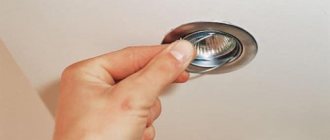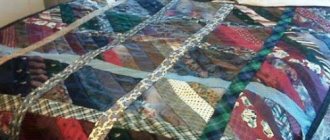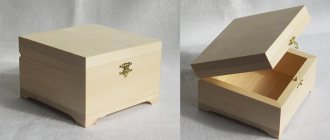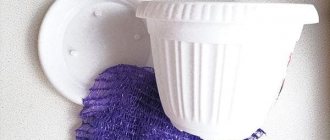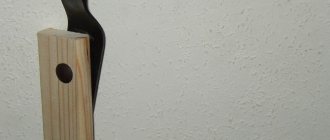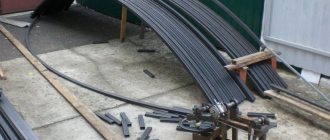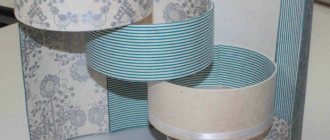Use abrasive powder
As with steel wool, the more grip between the screw head and the screwdriver, the better. You can sprinkle the surface of the screw with a small amount of abrasive scouring powder or fine sand, then apply a screwdriver to the screw and try to remove it. In many cases, powder or sand is enough to keep the bit from slipping off the screw.
If the cap is recessed
Every craftsman should have several ways to unscrew a broken screw, because one may not work. This depends on the material into which the fasteners are screwed, on the quality of the hardware itself, on the presence of rust and other nuances. I will describe all the methods known to me, and you can choose which of them suits you.
With spline restoration
If you are dealing with furniture screws or other hardware made of soft metal, then the notches on them “lick off” even when screwed in. You can unscrew them by installing a hard bit of suitable size into the slots and hitting it with a hammer.
Source sdelaysam-svoimirukami.ru
In a soft hat, after such blows, the slots are deepened and unscrewed with the same bat.
This trick will not work with hardened metal fasteners. But there is another way to unscrew the screw by restoring or cutting new edges. This is done using a miniature drill-driver (Dremel). If you don’t have one, a metal file or grinder will do. However, these “rough” tools with a large cutting blade will most likely leave cuts on the surface of the wood or other base, so this method is used when its preservation is not required.
Using a sealant
The broken notches hold neither the bit nor the tip of the screwdriver; they turn in the slot. This can be corrected by using an elastic sealing material that fills the free space and enhances adhesion. This could be a piece of rubber, genuine leather or something similar.
Before unscrewing the torn screw, place the seal on the head and plunge a screwdriver into the notches through it, being careful not to push it through.
Source netdna-ssl.com
Surely it will not be possible to unscrew the hardware in one go, since the gasket quickly breaks. Therefore, the procedure is repeated several times. The main thing is to move the thread from its place, then things will go faster. It is enough to pull out the screw so that you can grab it with pliers.
Using glue
The method is not the most effective and popular, but it also has a right to exist. Its essence is to temporarily glue the tip of a screwdriver into the head and prevent it from turning. Use quick-drying glue - epoxy, SuperMoment, etc. It is squeezed onto the head of the screw, a screwdriver is inserted into the slots and held until the composition completely hardens. Then they carefully begin to rotate the tool counterclockwise.
Source smazka.ru
Instead of glue, you can use solder - melt it with a soldering iron directly on the cap, and then proceed in the same way. This method will help to unscrew a broken screw from soft wood; it is not suitable for harder materials.
Using an extractor
The extractor is a special double-sided attachment for a screwdriver. At one end it has a tap for cutting threads, and at the other there is a cone with the same size thread. First, a tap is put into operation, with the help of which a vertical hole is drilled in the center of the head or even in the leg of the hardware with a broken head (if its thickness allows). Then the nozzle is turned over, inserting the cone into the hole made.
The method is one of the most reliable, but it all depends on the quality of the extractor steel. It is not always possible to drill a hole in hardened screws.
How to unscrew a self-tapping screw with torn edges using an extractor, see the video:
By welding
By analogy with the glue method, any steel rod, nut or bolt is welded to a broken or torn screw - anything to get an element protruding above the surface, which can be clamped with pliers and rotated, thereby unscrewing the thread.
With heating of hardware
This method will not help unscrew a broken screw from metal or concrete, but it gives a good result on wood. The hardware is heated with a soldering iron or a regular iron to a high temperature. At the same time, it increases in diameter, expanding the mounting hole in the wood. After cooling, the self-tapping screw returns to its previous size, but the hole remains large and holds the thread less well.
Source sdelaysam-svoimirukami.ru
If the torn notches do not allow you to unscrew even loose fasteners, additionally use glue or sealant.
On a note! You can loosen the adhesion of rusted hardware to metal by hitting it hard with a hammer several times. The rust is destroyed and crumbles. Solvent or WD-40 lubricant will help speed up the process.
Drill the screw
Select a drill bit that is slightly smaller in diameter than the screw head. Place it in the center of the screw head and drill slowly to create a hole 1 to 3mm deep. Remove the drill from the screwdriver and install the cue ball. Often the hole will help the screwdriver go deep enough into the screw, which will improve the grip between the cue ball and the screw.
Cardinal way
While it is still possible to unscrew a self-tapping screw with broken edges, if the head breaks or the thread is broken, this becomes very problematic. In such cases, there is often no other choice but to drill out the fasteners with a tubular cutter along with the wood. She cuts the tree around the circumference, making a cylindrical hole in it. The self-tapping screw remains in the removed part, and a plug made in the same way from another piece of wood is subsequently hammered into the hole. After sanding and painting, the defect becomes almost invisible.
Watch a video on how to drill a self-tapping screw from wood:
If the integrity of the surface is not important and you just need to separate the fastened parts, you can do without a milling cutter, using a chisel and a hammer.
Advice! When driving screws into hardwood, plywood or chipboard, it is advisable to treat the threads with lubricant, soap or wax. This will make screwing easier and reduce the risk of breaking off the head or breaking off the notches on the cap.
Source userapi.com
Use elastic bands to grip
Wide rubber bands work well to ensure that the screwdriver has enough grip on the stripped screw. Cut the rubber band with scissors and place it on the head of the screw. Place the screwdriver on the rubber band and press firmly while turning the screw counterclockwise.
Follow us on Pinterest for more interesting articles.
Useful short videos from Make-Self.net
If the cap protrudes
The easiest way to remove a screw is if it is not completely screwed in and the head can be grabbed with a hand or power tool. You have two ways:
- hold the head of the hardware with pliers and rotate them counterclockwise;
Source sdelaysam-svoimirukami.ru
- open the chuck of a screwdriver or drill to the size of the head, grab it, clamp it and turn the tool on in reverse rotation.
These methods of how to unscrew a self-tapping screw with torn edges can be used without harm to the surface only if the height of the protruding part of the hardware is sufficient for gripping. In other cases, scratches, chips and other damage cannot be avoided. Therefore, if the work needs to be done “cleanly,” methods for recessed heads are used.
Gluing the tool and the screw
If you don’t have rubber at hand, but have a fairly “powerful” glue, then you can use it. To do this, a small amount of glue is dripped onto the surface of the screw. When it begins to dry, place the screwdriver or drill in its original position, press firmly and wait until the glue has completely set. After this, the screw is unscrewed in the usual way.
The note. When using this method, you need to work with the tool very slowly and carefully. Otherwise, there is a high probability that the tool will come off and you will have to start all over again.
How to unscrew a broken screw or screw
It happens that a screw or screw that has a countersunk or semi-countersunk and round head, where there is a tightly torn cross-shaped or straight slot, and the screw or screw is tightened flush to the surface - in such cases you will not be able to take pliers and pull it out. It is not permissible to damage the surface to which the screw is screwed - here it is not at all an option to select material from under the head so that it can be fixed with pliers. Moreover, it is not allowed to use a crowbar, as in the case of nails.
Now we will look at some solutions on how to unscrew a broken screw.
Why are the edges of the screw torn off?
There are several negative factors that explain why the head does not unscrew:
- corrosion of the metal, as a result the structure of the material is disrupted, it loses its properties, becomes less durable, crumbles, this leads to the fact that during the repair the technician will not be able to dismantle it by unscrewing the rusty fasteners;
- a screw tends to spin if it has been installed in a structure made of the wrong material.
The problem of how to unscrew a screw arises when the rules for using the tool are violated.
The problem occurs when the rules for using the tool are violated
crosshead screwdriver
Possible causes of fastener damage:
- poor quality of the tool: the metal is too soft, which causes the screwdriver to constantly slip out, the sharp edges have become dull due to wear, this also does not allow the screw to be firmly fixed in the slot, in addition, the tool may be incorrectly selected for such work (does not match the head size);
- weak efforts in the process of unscrewing the fastener, while the screwdriver is not held in the slot, constantly slips, as a result the head is deformed, for this reason it is called “slipped”;
- At the installation stage, the fasteners were installed in a structure made of a material that does not match the screws, because of this it rotates; using a screwdriver it will not be possible to pull out such hardware.
The tool may not be selected correctly for the job.
Screwdriver bit
A common problem with using power tools is the incorrect choice of operating speed. Use moderate force to drill out the fasteners. The operating time of the screwdriver should be short. If you drill a screw intensively, the slot will become deformed. As a result, you will have to additionally decide how to unscrew a screw with a damaged head, which will increase the time it takes to complete the work.
If you drill a screw intensively, the slot will become deformed.
Using auxiliary holes
The situation is completely different if the self-tapping screw is deeply embedded and there is nothing to grab hold of with pliers. In this case, you will have to create a recess around the ill-fated self-tapping screw for subsequent work with pliers. If the surface is wooden, then a chisel is best. In other cases, as a rule, the screw will have to be drilled out.
It should be understood that this method will damage the surface. However, it is often much easier to repair damaged material than to try to remove the screw using other methods.
Extractor
The last method, which will be discussed in this article, involves using an extractor. Typically this tool is used to unscrew bolts, but nothing prevents them from being used when working with a self-tapping screw. The secret of the extractor is that when tightened, it grips the fastener more and more, preventing it from slipping.
Important! Before starting work, it is necessary to drill a hole in the surface of the screw into which the extractor will be inserted.
In the end, I would like to draw your attention to the fact that the most effective and universal methods, as a rule, involve damage to the working surface. This scares many people, since they will then have to restore the material around the screw. However, as practice shows, sometimes it is easier and faster to unscrew the screw, ruining the surface and then repairing it, than to unsuccessfully try other ways to solve the problem.
